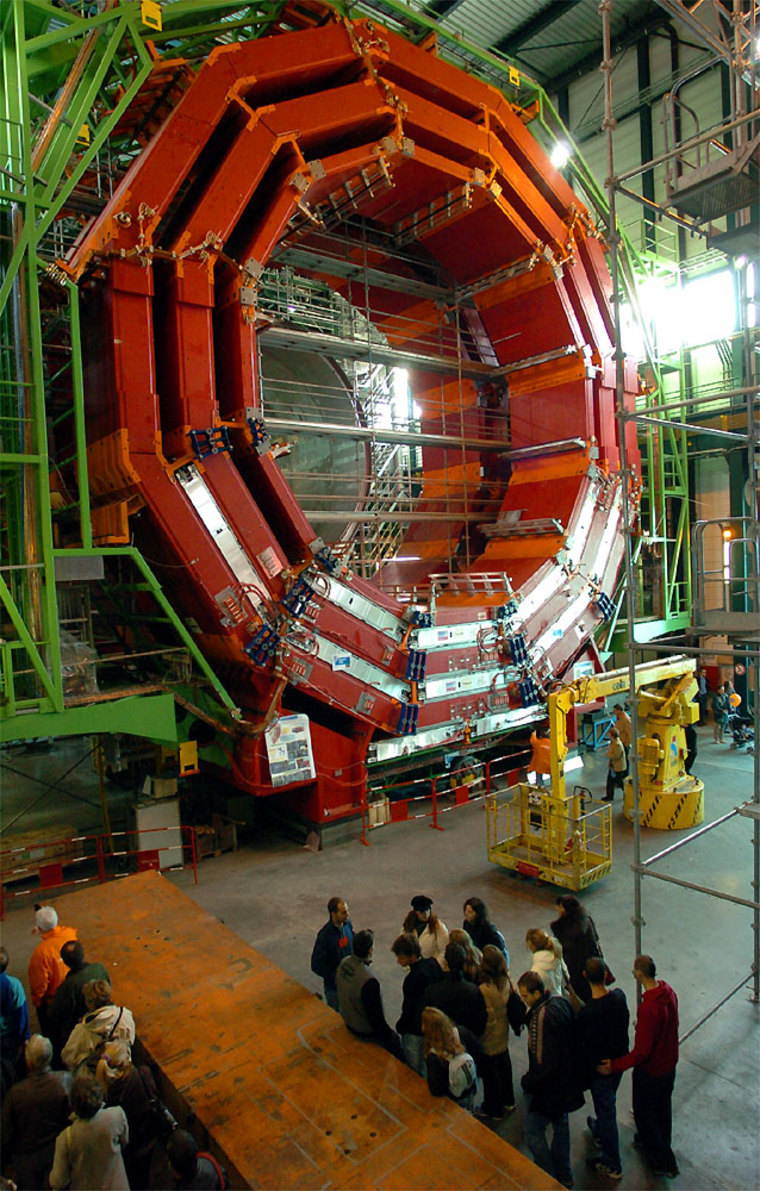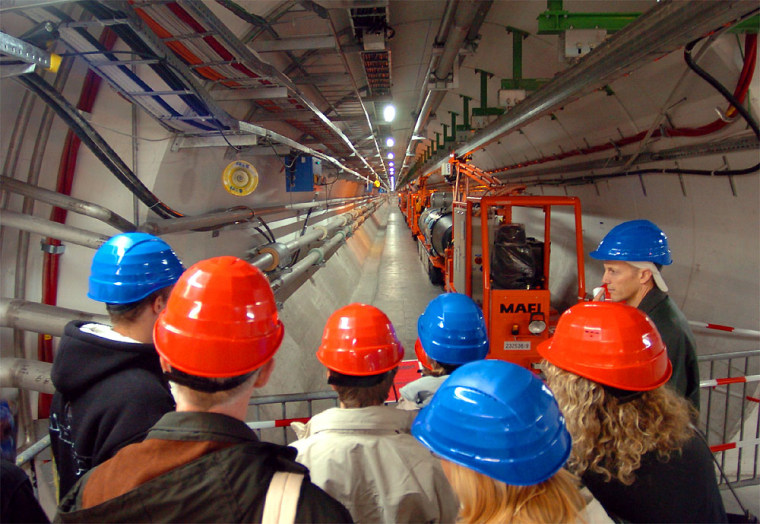It has revolutionized physics, made Nobel Prize winners and given birth to the World Wide Web — now the European Organization for Nuclear Research, or CERN, looks set to answer some of the natural world’s most fundamental questions.
CERN has made many formidable discoveries since its launch 50 years ago, but these achievements could be dwarfed by findings from a 17-mile (27-kilometer) accelerator, or particle-smasher, being assembled outside Geneva.
From 2007 it will be firing particles at speeds nearing that of light, before smashing them together to re-create the conditions scientists believe existed less than one billionth of a second after the Big Bang — the birth of the cosmos 14 billion years ago.
“(We) have achieved very, very important results in what we call particle physics, which is to say, what happened after the Big Bang,” said CERN Director-General Robert Aymar.
“Right now we have too many theories, and this is the machine to confirm, or not, the models that we have. Only experiment can help us make the choice,” he told Reuters.
The next accelerator
The new accelerator, known as the Large Hadron Collider, replaces another, the Large Electron Positron Collider, which was the world’s largest and Europe’s biggest civil engineering undertaking until the Channel Tunnel was built.

The statistics of the new venture are mind-boggling. The temperatures created in the particle collisions will be around 1 billion times that of the center of the sun.
Ever since Sir Isaac Newton, scientists have known that gravity acts on mass, but what they still do not know is where the particles get their mass from.
Among the particles they hope will be scattered in the colossal explosions will be the sought-after Higgs boson, the so-called God particle, which according to the Standard Model of particle physics is responsible for generating mass.
Other questions the LHC may help answer include the nature of “dark matter,” which scientists say makes up some 95 percent of the universe but which has not yet been detected.
Ceremony celebrates achievements
Swiss President Joseph Deiss and French counterpart Jacques Chirac will be joined by Spain’s King Juan Carlos for a 50th anniversary ceremony on Tuesday, the culmination of weeks of events focusing on CERN’s achievements and the challenges ahead.
Aymar says foremost among those achievements was providing proof in 1973 for the so-called electroweak model — that two of the four forces of nature, the weak and the electromagnetic force, had been unified at the outset of the universe.
In 1984, Italian physicist Carlo Rubbia and CERN colleague, Simon van de Meer, discovered the carriers of the weak force — a breakthrough that earned them a Nobel Prize a year later.
CERN was also responsible for the birth of the World Wide Web, designed in 1990 to allow its scientists to have access to data wherever they happened to be.
Its work on particle-accelerators has also had medical applications, notably with the development of positron emission tomography, a form of radio-pharmaceutical diagnosis that can speed the detection of cancers.
